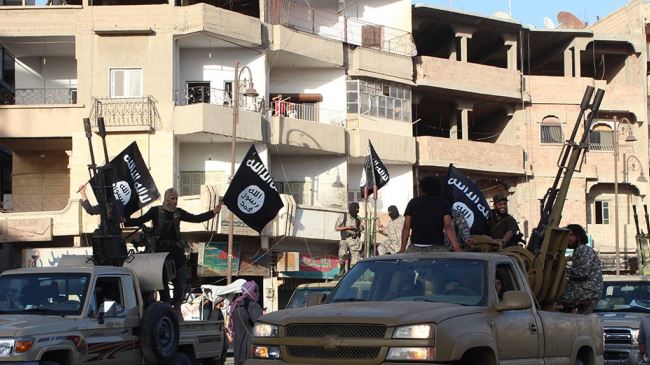There has been much public and media discussion as to the CIA's recent release of new estimates regarding the size of the Islamic State of Iraq and the Levant (ISIL). From 10,000-12,000 fighters when they started their Iraq offensive in June to as many as 20,000-31,000 late last week. What happened? How could they almost triple in size in just three months? Did the CIA underestimate ISIL's strength all along?
Actually, there is a very plausible explanation for ISIL's rapid and exponential growth, which can most easily be explained using the "winning team" analogy. Everyone wants to be on the side of a winner, and right now ISIL, as ruthless and despicable as they are, is perceived by many, particularly extremists wanting to be in the fight, as winning the ground campaign in Syria and Iraq, where they are firmly in control, at least for the time being, of a territory roughly the size of Jordan.
Prior to the start of their Iraq campaign in June, ISIL was already considered the more formidable and better lead opposition force fighting in Syria. After rolling over what little resistance the Iraqi Security Forces could muster, and that's putting it diplomatically, ISIL took control of a third of Iraq in a matter of just days, most of which they still hold.
Looted gold and cash
In capturing Mosul, Iraq's second largest city, they not only took possession of hundreds of armoured vehicles, tanks, artillery pieces, mortars, heavy machine guns and other assorted weapons and ammunition abandoned by the fleeing Iraqi army, but also instantly increased their coffers by an estimated $425m in gold and cash when they looted the Iraqi Central Bank.
ISIL has also succeeded in taking control of the major oil refineries in their newfound territory, and has no shortage of willing black market buyers in Turkey, Jordan, and Syria itself. Indeed, it is estimated ISIL oil revenues in Iraq and Syria exceed $3m per day - that's more than $1bn per year.
With their rapid territorial, military, and financial gains in Iraq and Syria, barbaric, wholesale slaughter of Shia soldiers who surrender, as well as their horrific murder of civilians, all shamelessly put out on social media, ISIL has solidified their reputation, both locally and around the world, as a force to be reckoned with. Those opposing them have two choices - run away or face a certain gruesome death. They have taken the violent extremist ideology referred to as Bin Ladinism, common among all Islamist terrorist groups, to a new and unprecedented level, and are challenging al-Qaeda for leadership of the global "jihadist" movement.
In short, ISIL's rapid successes on the battlefield, its macabre tactics, extreme ideology, claims to being the "Islamic State", and sizeable treasury do appeal to a small but like-minded following, and are a public relations and recruiting bonanza for them. Birds of a feather flock together.
Religious duty
In the eyes of radicalised youth wanting to join the fight in Syria and Iraq out of a sense of religious duty, ISIL is seen as the unbeatable winner in a fight against apostate regimes and others who do not adhere to their ideology. As such, new foreign fighters are pouring into the ISIL ranks every day.
They come from Asia, throughout the Middle East, North Africa, Europe, and North America. Many are looking to fill a void in their lives through a sense of camaraderie in being part of something they perceive as being bigger than themselves. Still others, already battle hardened in the other armed conflicts plaguing North Africa, the Middle East and Asia, look to ISIL as fighting and winning the more important cause.
Through their much-publicised military successes, ISIL has also succeeded in drawing a significant number of defectors from other rebel and Islamist extremist groups already fighting on the ground in Syria - most notably the Free Syrian Army and the al-Qaeda affiliated Jabhat al-Nusra. As with new foreign fighters flowing into Iraq and Syria from around the world, these seasoned fighters have switched allegiance because they view ISIL as an unstoppable force, fighting what is in their view the bigger, more important battle.
Finally, by threatening to destabilise much of the Middle East, ISIL has succeeded in drawing not only American, British and other western powers into the conflict, but regional actors as well, both Sunni and Shia, giving the most hardened Islamist extremists an opportunity that in their minds is too tempting to resist - fighting invading apostates head on. As with the US-Iraq war of the last decade, the presence of western armies on the ground or in the skies over Iraq and Syria, will act as a magnet for Islamist extremists all too willing to join ISIL and defend the caliphate against foreign invaders.
Through their aggressive and ruthless "no-quarter" tactics against what they consider apostate enemies, effective use of social media, claims of a caliphate, and recent notoriety as what may arguably be the wealthiest terrorist organisation in history, ISIL has been assured - at least for now - a constant flow of new fighters into its ranks. That spigot will likely continue to flow until such time as they are no longer perceived as winning on the ground. The sooner that happens, the better.
By Martin Reardon
Martin Reardon is a Senior Vice President with The Soufan Group, a New York-based strategic security and intelligence consultancy, and Senior Director of Qatar International Academy for Security Studies. He is 21-year veteran of the FBI, specialised in counterterrorism operations.
/149

